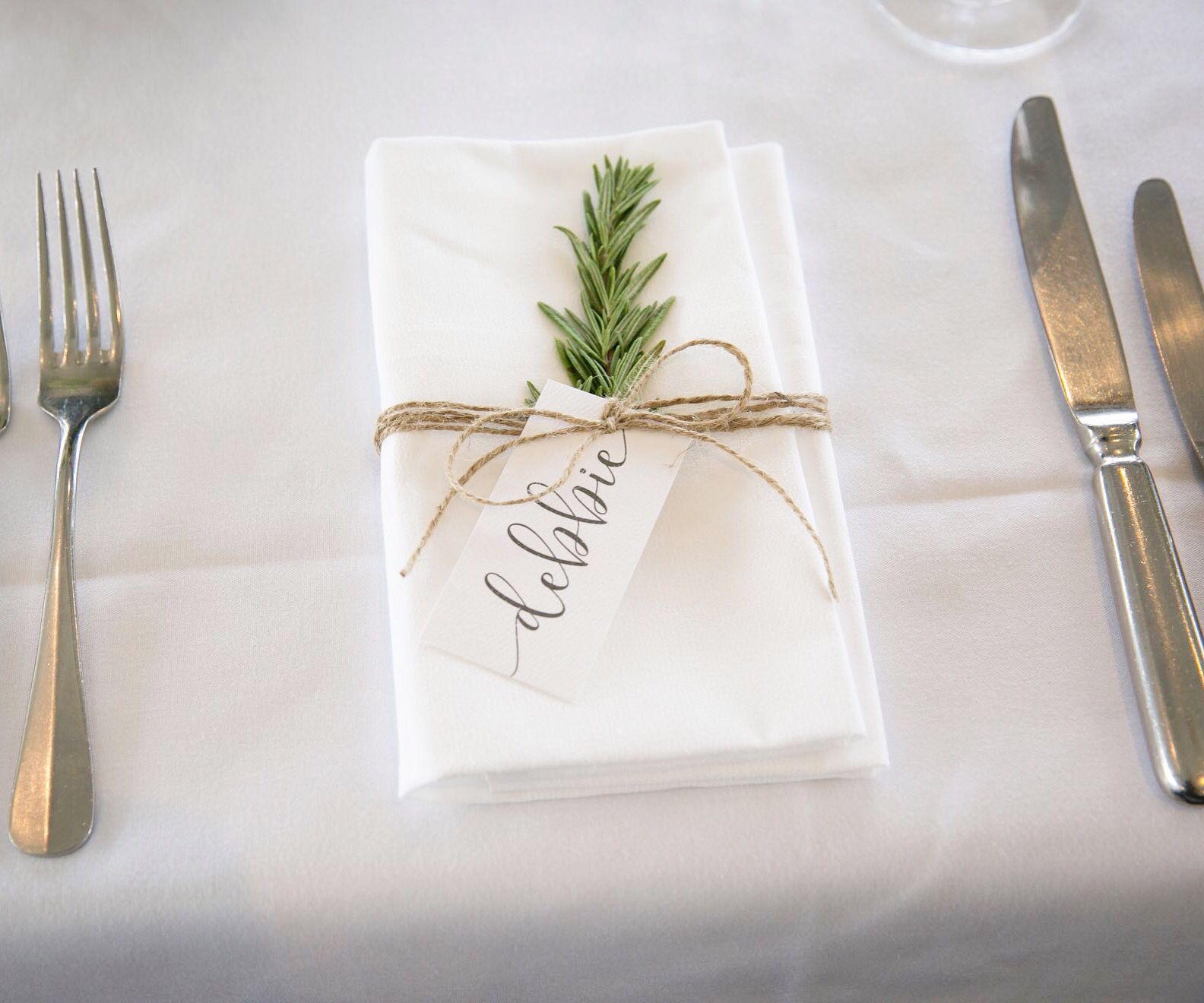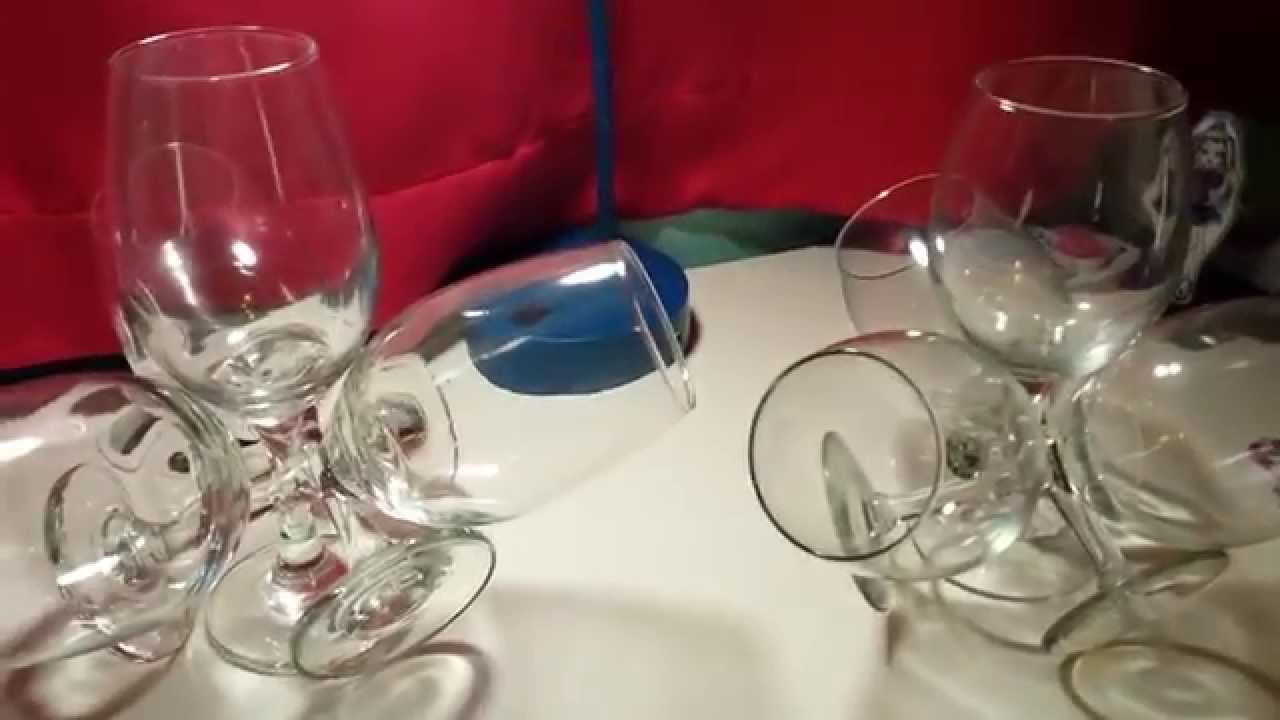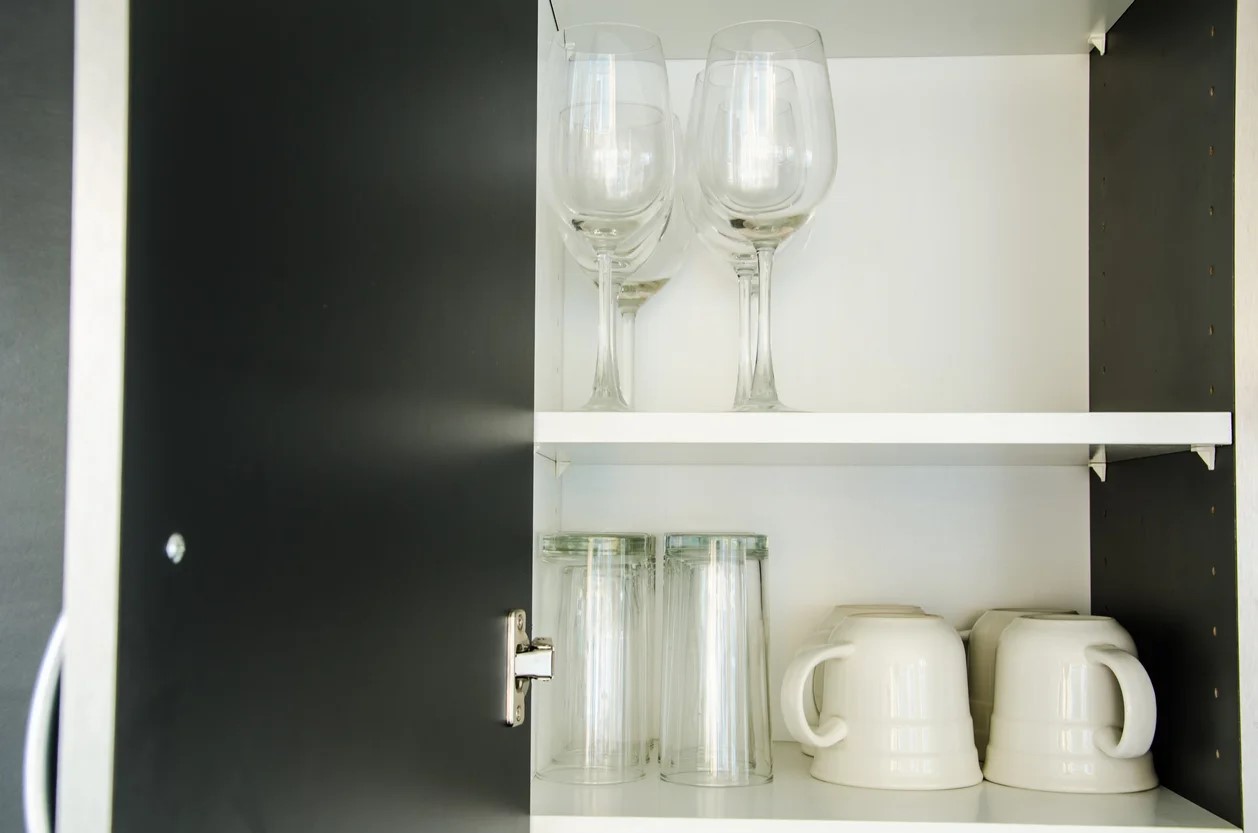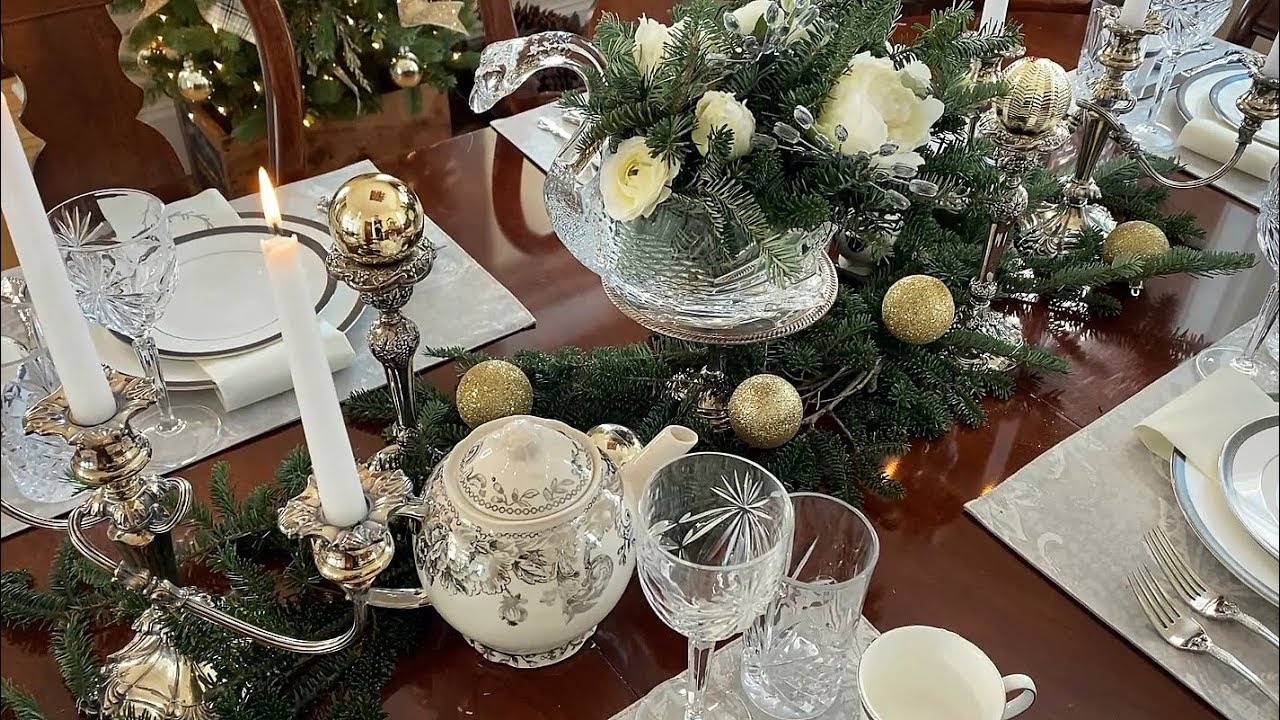Home>Dining>Tableware>What Is The Eighth Item In A Place Setting?


Tableware
What Is The Eighth Item In A Place Setting?
Modified: January 9, 2024
Discover the answer to what the eighth item in a place setting is and learn more about essential tableware for your dining experience.
(Many of the links in this article redirect to a specific reviewed product. Your purchase of these products through affiliate links helps to generate commission for Storables.com, at no extra cost. Learn more)
Introduction
Welcome to the world of tableware, where each piece has its own unique role in creating a complete and stylish dining experience. A well-set table not only elevates the aesthetic appeal of a meal but also enhances the overall dining experience. Whether you are hosting a formal dinner party or enjoying a casual meal at home, understanding the basics of a place setting is essential.
Traditionally, a place setting consists of dinnerware, glassware, and flatware, all strategically placed to serve their specific purposes. While most people are familiar with the main components of a place setting, such as dinner plates, forks, and glasses, there is often confusion surrounding the eighth item in the arrangement. This article aims to shed light on this lesser-known yet essential element and provide insight into its significance in a well-organized table setup.
So, what exactly is the eighth item in a place setting, and why is it important? Read on to explore the answer as we dive into the world of tableware.
Key Takeaways:
- The eighth item in a place setting, whether a demitasse spoon or a butter knife, adds elegance and practicality, enhancing the dining experience and showcasing the host’s attention to detail and hospitality.
- Understanding the purpose and significance of the eighth item allows hosts to customize table setups, reflecting personal style and creating memorable dining experiences for guests.
Read more: What Are Place Settings In A Dishwasher
The Basics of a Place Setting
Before we delve into the eighth item of a place setting, let’s first establish a solid foundation by understanding the basics. A standard place setting typically consists of the following components:
- Dinner Plate: This is the largest plate in the setup, where the main course is served.
- Salad Plate: Smaller in size, this plate is used for serving salads or appetizers.
- Bread and Butter Plate: This smaller plate is specifically designed for holding bread or a roll, usually placed above the dinner plate.
- Fork: Multiple forks may be included, with the largest one typically placed on the left side of the dinner plate for the main course.
- Knife: Similar to forks, different knives might be included to handle various courses. The main knife is placed to the right of the dinner plate, with the cutting edge facing inwards.
- Spoon: Like knives and forks, spoons may vary in size and purpose. The soup spoon is placed to the right of the knife, while dessert spoons are usually set above the plate.
- Glassware: At least two glasses are typically included – one for water and another for wine. The water glass is placed directly above the knife, while the wine glass is positioned to the right of the water glass.
As you set your table, these are the fundamental elements of a place setting, creating a well-organized and visually appealing setup. However, many individuals are often left wondering about the mysterious eighth item. Let’s explore its purpose and significance in more detail.
The Purpose of an Eighth Item
The eighth item in a place setting serves a specific purpose in enhancing the dining experience. Its inclusion is not only for aesthetic reasons but also for practicality and convenience. The primary function of the eighth item is to provide a specialized utensil or tool to complement the main course or enhance the enjoyment of the meal.
While the first seven items in a place setting are considered standard and essential, the eighth item can vary depending on cultural traditions, regional practices, or personal preferences. This flexibility allows for creativity and customization in table setups.
As we explore some common eighth items in the following sections, it’s important to note that the choice of the eighth item can vary based on the cuisine being served, the formality of the occasion, or personal preferences of the host.
Traditional Eighth Item: Demitasse Spoon
One of the traditional choices for the eighth item in a place setting is the demitasse spoon. The demitasse spoon is a small, delicate spoon specifically designed for stirring and sipping espresso or a small cup of strong coffee after a meal.
This elegant and slender spoon is usually made of stainless steel or silver and is shorter than a standard teaspoon. Its compact size makes it perfect for gracefully stirring the coffee and capturing the subtle flavors. The demitasse spoon typically has a slightly curved handle and a small, shallow bowl that allows for precise stirring without overpowering the delicate coffee aroma.
In addition to being functional, the demitasse spoon also adds a touch of sophistication to the overall table setting. Its presence signals the completion of a formal meal and the transition into the post-dinner coffee-drinking ritual. It brings a sense of refinement and elegance, making it an excellent choice for formal dining events or dinner parties.
When including the demitasse spoon as the eighth item in a place setting, it is typically placed horizontally above the dinner plate, parallel to the bread and butter plate. Placing it in this position ensures easy access for guests when they reach the end of the meal and want to enjoy a cup of coffee.
While the demitasse spoon is a traditional choice, it is important to remember that table settings can be customized to suit individual preferences. If coffee or espresso is not typically served after the meal, the demitasse spoon can be substituted with another appropriate utensil or tool that complements the cuisine or the occasion.
The eighth item in a place setting is typically a dessert spoon or fork. It is placed horizontally above the dinner plate, with the handle facing to the right.
Modern Eighth Item: Butter Knife
As culinary traditions and dining habits evolve, so does the choice for the eighth item in a modern place setting. A popular contemporary option for the eighth item is the butter knife.
The butter knife is a small, blunt-edged knife specifically designed for spreading butter or other spreads onto bread, rolls, or toast. It features a narrow blade with a rounded tip, allowing for easy and controlled butter application without tearing the bread.
Including a butter knife in the place setting serves both functional and aesthetic purposes. From a practical standpoint, it eliminates the need for guests to use their dinner knife to spread butter, preventing any awkwardness or inconvenience. Additionally, the presence of a dedicated butter knife adds a touch of elegance and sophistication to the table arrangement.
When incorporating the butter knife as the eighth item, it is typically placed horizontally on the butter and bread plate. This placement ensures that guests have easy access to the knife when they want to spread butter on their bread or rolls.
The choice of a modern butter knife as the eighth item showcases attention to detail and demonstrates the host’s commitment to ensuring a seamless and enjoyable dining experience for all guests. It is a practical addition that embodies both functionality and aesthetic appeal.
It’s important to note that the selection of the eighth item in a place setting is not limited to just the demitasse spoon or butter knife. There are various other options that can be considered, depending on the occasion, cuisine, or personal preferences of the host. Let’s explore some of these alternative eighth items in the next section.
Read more: What Place Settings Are Millennials Using
Other Possible Eighth Items
While the demitasse spoon and butter knife are common choices for the eighth item in a place setting, there are several other options to consider based on personal preferences, cultural traditions, or the specific dining occasion. Here are a few examples:
- Fish Fork: A fish fork is a specialized utensil with a slightly shorter and wider handle, specifically designed for enjoying fish dishes. It typically has a pronged end that assists in gently separating the meat from the bones.
- Salad Fork: For those who enjoy a salad course as part of their meal, a salad fork can be included as the eighth item. It has slightly longer tines that make it easier to spear lettuce leaves or other salad components.
- Palette Knife: A palette knife, also known as an icing knife or frosting spatula, can be a unique addition to a place setting, especially for formal events or occasions involving desserts. Its flexible blade is ideal for smoothly spreading frosting or icing on cakes.
- Chopsticks: In Asian cultures or when serving Asian cuisine, chopsticks may replace the traditional Western utensils as the eighth item. Chopsticks can add a cultural element to the table setting and provide an authentic experience for guests.
- Specialty Spoon: Depending on the menu or the specific dish being served, a specialty spoon such as a caviar spoon, soup ladle, or dessert spoon can be included as the eighth item. These spoons are designed to handle specific types of food, adding refinement to the dining experience.
These are just a few examples of alternative eighth items that can be incorporated into a place setting. The choice ultimately depends on individual preferences, the type of meal being served, and the desired ambiance or theme of the event.
By carefully selecting the appropriate eighth item, hosts can create a customized and memorable table setup that reflects their personal style and attention to detail.
Conclusion
A well-set table is a visual representation of the care and thoughtfulness put into creating a memorable dining experience. Understanding the basics of a place setting is essential for anyone who wishes to elevate their tableware knowledge and host with finesse.
While the first seven items in a place setting are widely recognized, the eighth item often remains a mystery. Whether it’s the traditional demitasse spoon or the modern butter knife, the eighth item serves a specific purpose in enhancing the dining experience.
By including a demitasse spoon, hosts can signify the completion of a formal meal and the transition into the post-dinner coffee-drinking ritual. The demitasse spoon adds elegance and sophistication to the table setup, allowing guests to savor the flavors of espresso or a small cup of strong coffee.
Alternatively, the choice of a butter knife as the eighth item offers practicality and convenience. It ensures that guests have a dedicated utensil for spreading butter or other spreads on bread or rolls, enhancing the dining experience and eliminating any potential awkwardness.
Aside from these traditional options, hosts can also explore other possibilities, such as including a fish fork, salad fork, palette knife, chopsticks, or a specialty spoon. These alternative eighth items can add a personal touch, cultural flair, or functional benefit to the table setting.
The eighth item in a place setting is an opportunity for hosts to showcase their attention to detail, creativity, and hospitality. It allows for customization based on personal preferences, the cuisine being served, and the occasion at hand.
In conclusion, a well-designed place setting is a testament to the host’s commitment to creating a memorable dining experience. By carefully selecting the eighth item and considering its purpose and significance, hosts can curate a table setup that not only pleases the eye but also enhances the enjoyment of the meal.
So, next time you set the table, remember the importance of the eighth item and let it be a reflection of your personal style and hospitality. Happy hosting!
Frequently Asked Questions about What Is The Eighth Item In A Place Setting?
Was this page helpful?
At Storables.com, we guarantee accurate and reliable information. Our content, validated by Expert Board Contributors, is crafted following stringent Editorial Policies. We're committed to providing you with well-researched, expert-backed insights for all your informational needs.















0 thoughts on “What Is The Eighth Item In A Place Setting?”